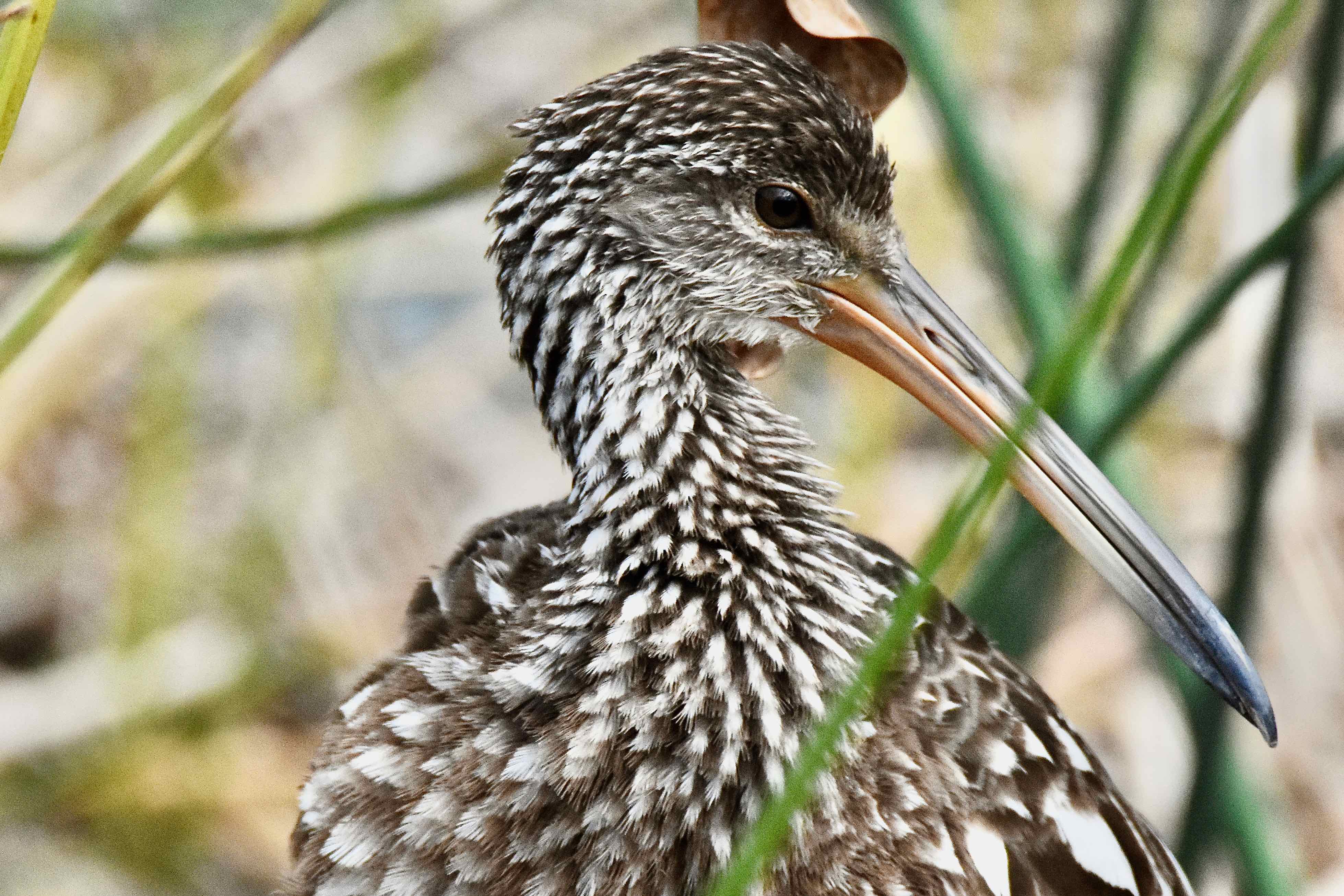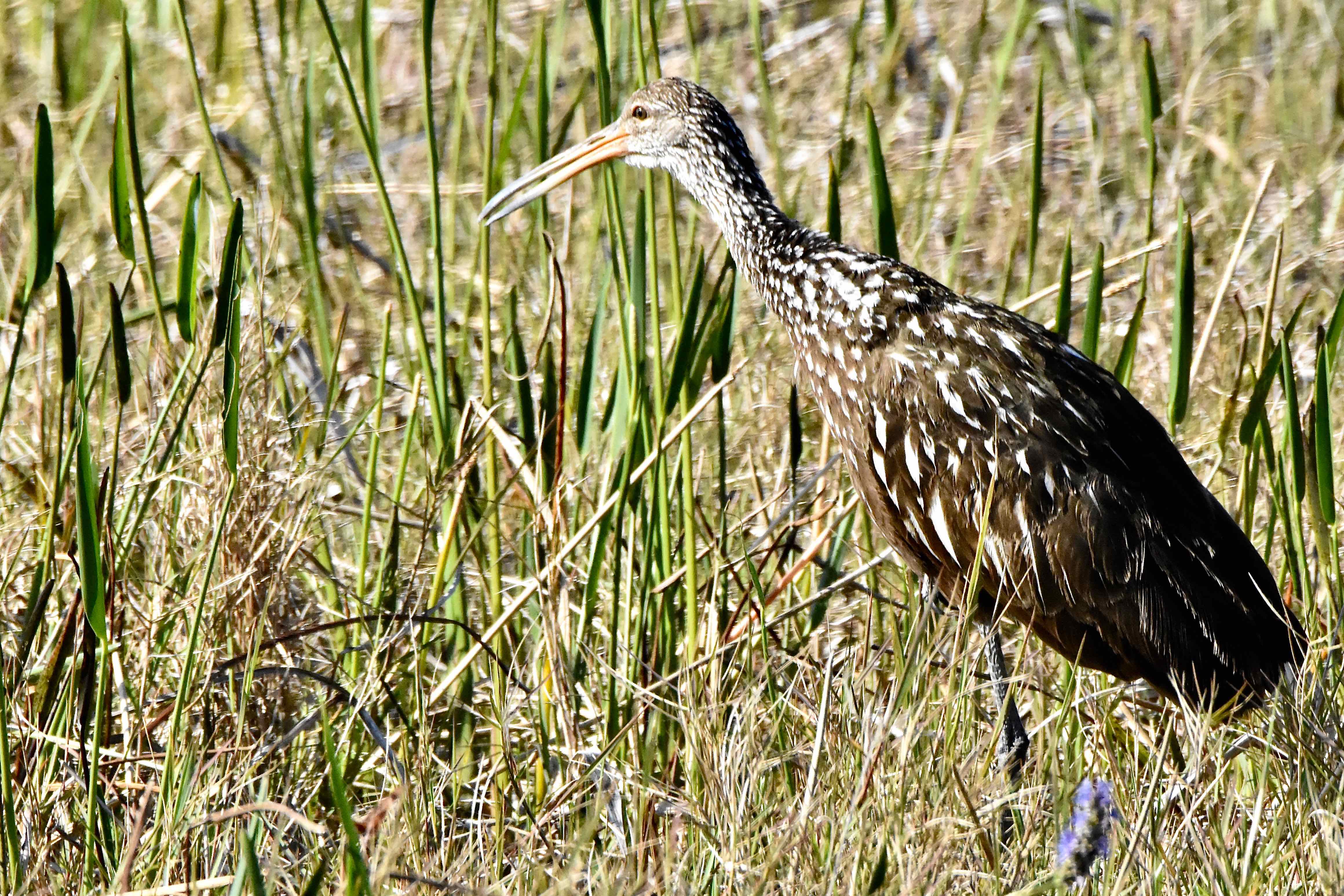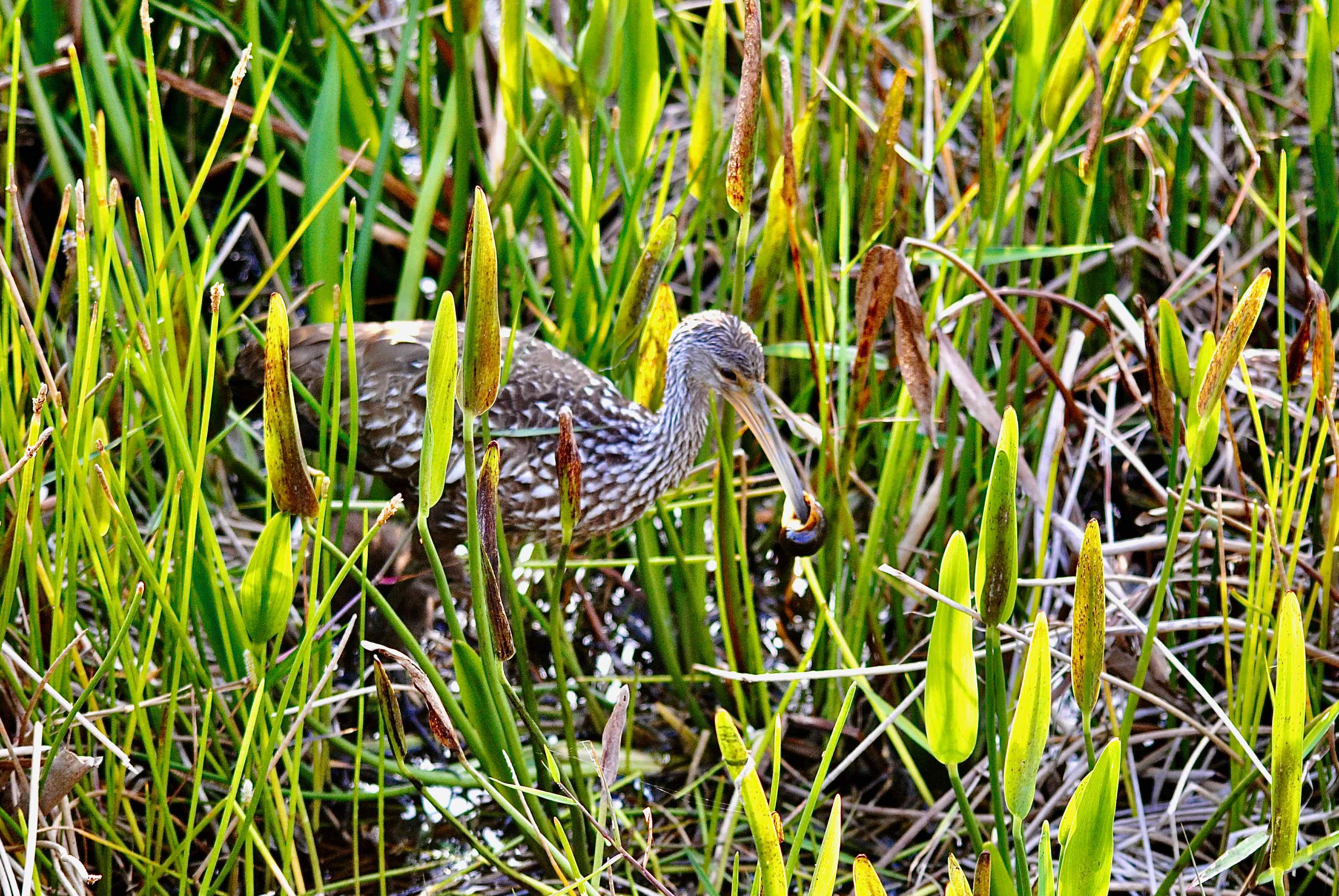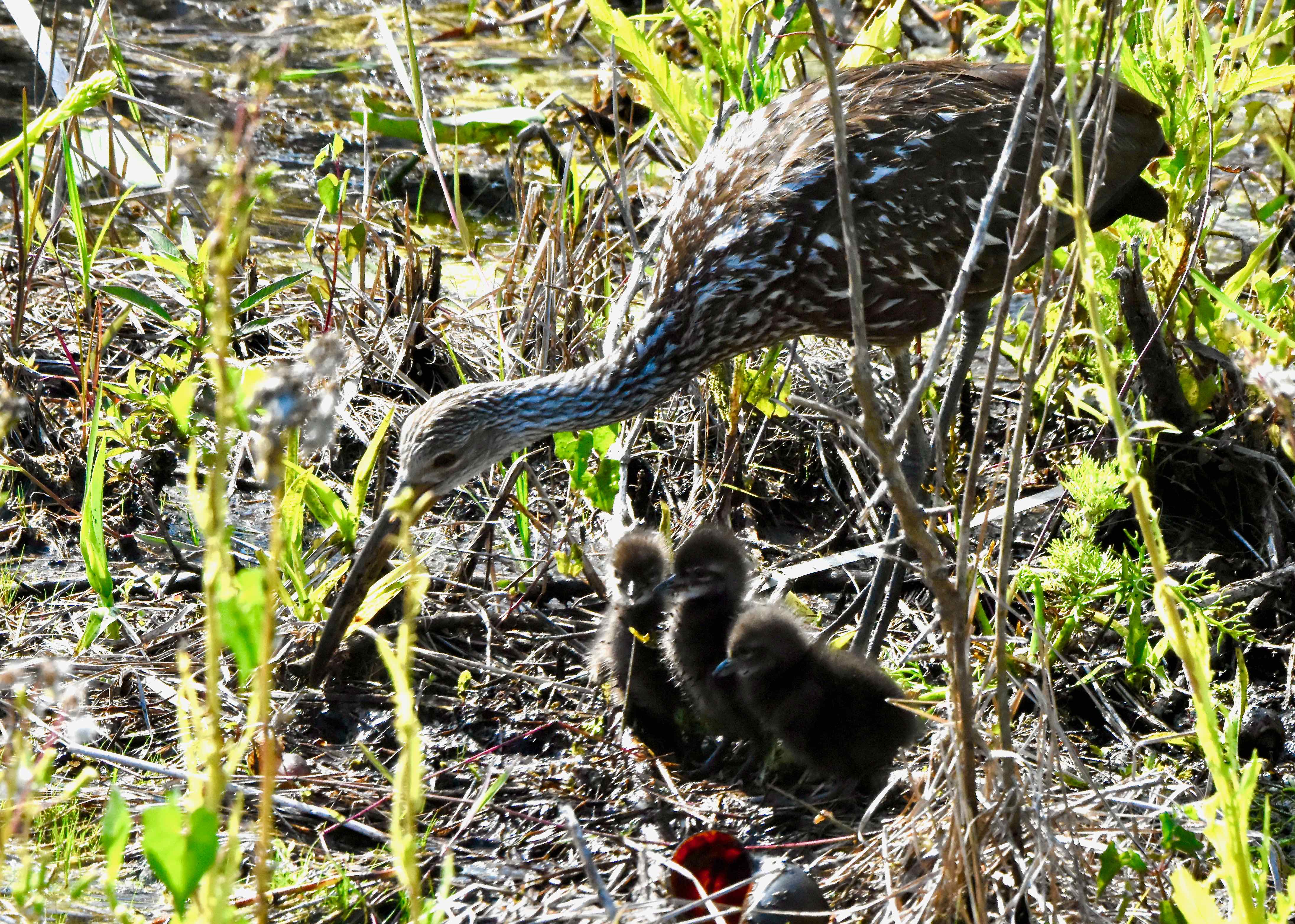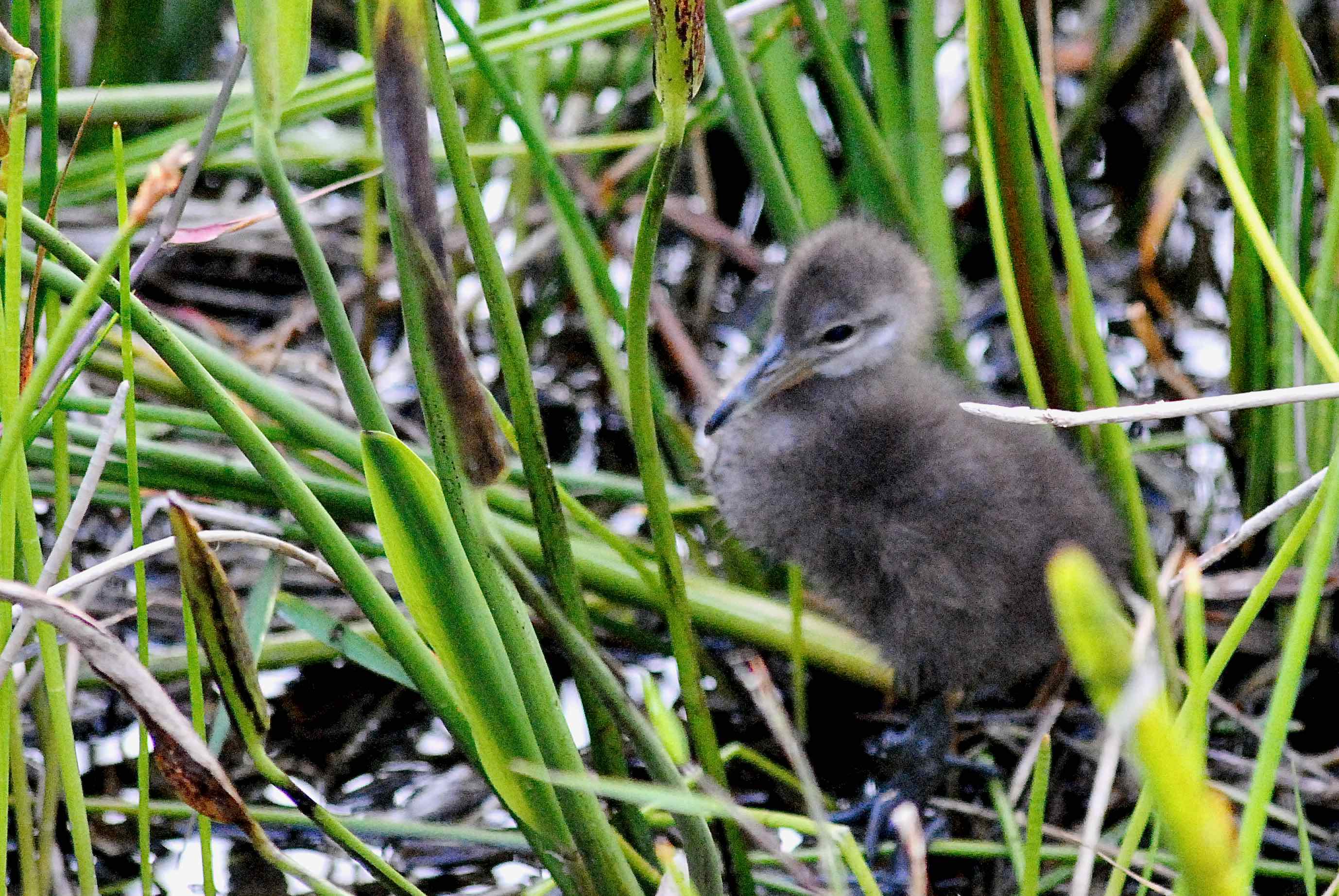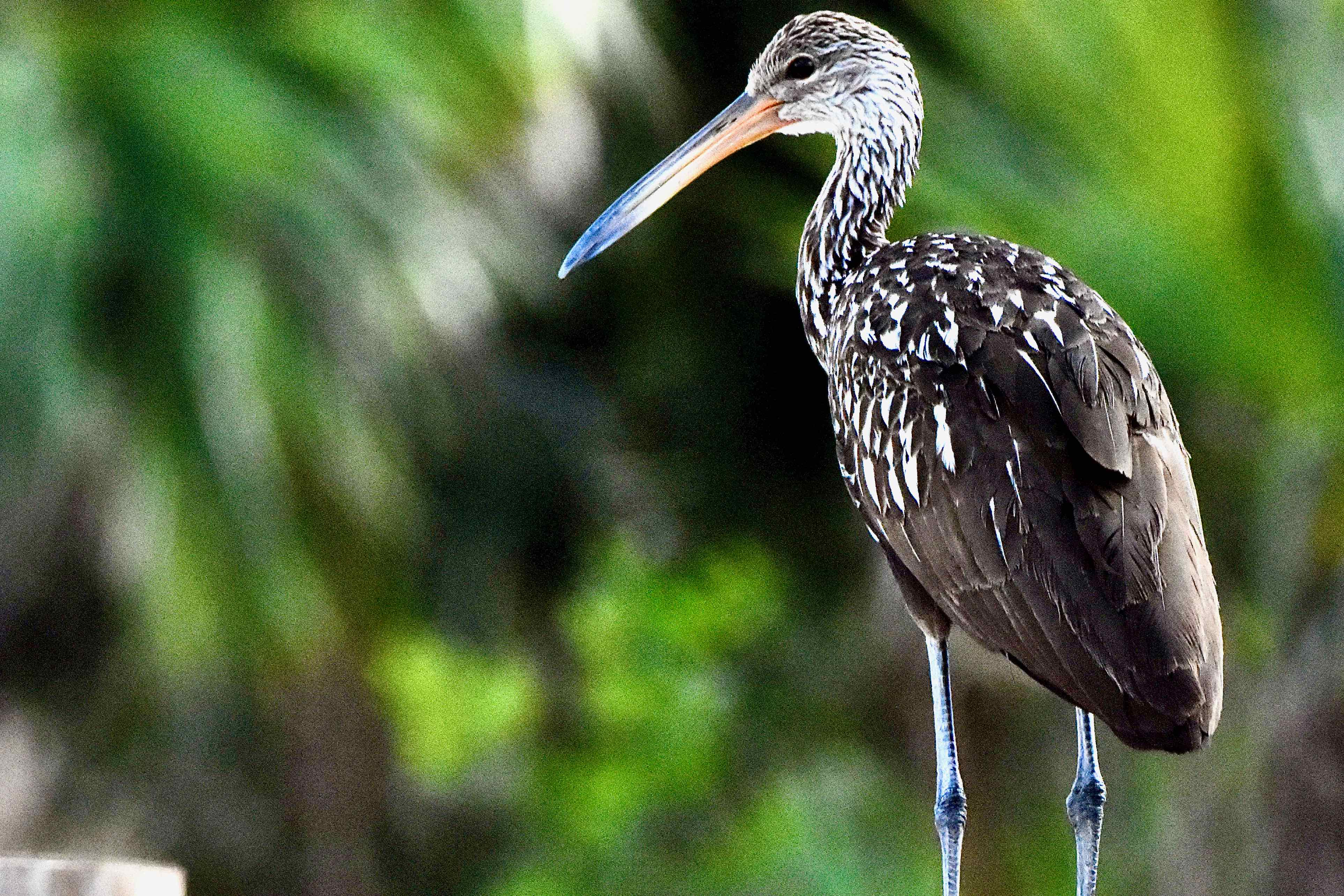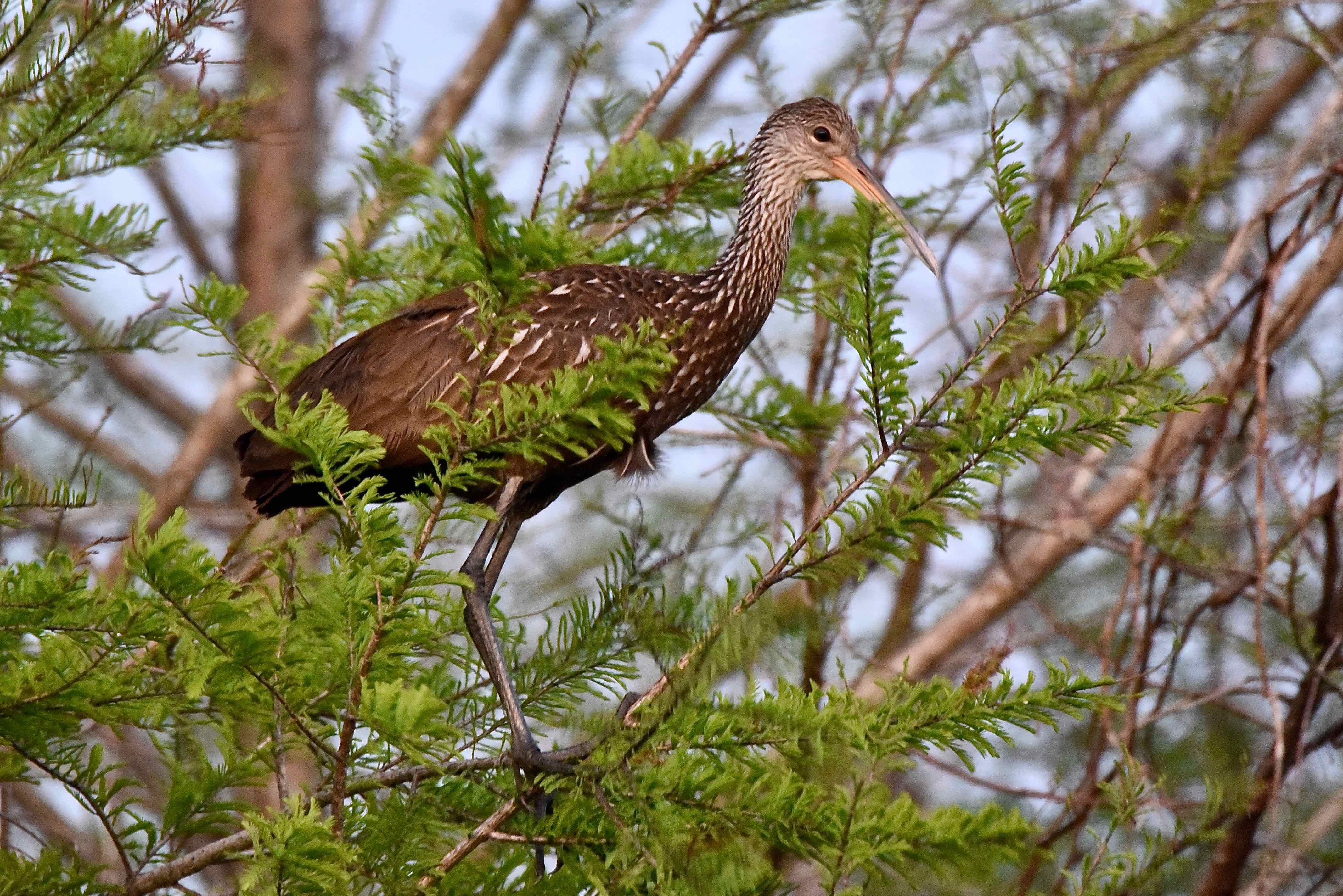
Limpkin, photographed at Green Cay Nature Center, Boynton Beach, Palm Beach County, in March 2018.
You can't miss a limpkin, Aramus guarauna, once you've seen — or heard — one. There's just no other bird like it. And about the only place you'll see a limpkin, among the 50 states, is here in Florida.
Limpkins live year-round in the Sunshine State, the northern most point of their range, which extends through Mexico, the Caribbean, Central America and South America as far south as Uraguay. They are common in South Florida's wetlands, where they feed mostly on apple snails (photo at bottom right, top row). If you don't see one, most likely you'll hear one. The limpkin has an extremely loud, plaintive cry that echoes through the surrounding marshes.
Limpkins are large birds, with long necks, long, stout bills and long legs. It's dark brown with white streaks and spots, more prominent on the upper portions of the body. Limpkins can be as long as two-and-a-half feet with a wingspan of three-and-a-half feet, or more.
As noted above, the limpkin's favorite food is the apple snail. The limpkin's long bill, with a tweezer-like opening and slight curve, is adapted to remove the snail from its shell. But unlike that other devotee of escargot, the snail kite, limpkins will dine on snails other than the apple. And, according to the Cornell Laboratory of Ornithology freshwater mussels are also on the limpkin's menu. They find their prey by sight or by touch.
Limpkins aren't picky when it comes to selecting a nesting site; they will nest on the ground or high up in trees, in a place well concealed or fairly open. The nest is a platform made of whatever plant stuff happens to be abundant in the area — sticks, reeds, Spanish moss, alone or in any combination. Females lay as many as eight eggs per clutch; both parents incubate the eggs, but how long isn't known. Both probably feed their young. One oddity: the parents will feed one chick until its full, while the others patiently wait their turn. Limpkin chicks can clamber about their world soon after hatching, but how long it takes them to fledge is also unknown. At nine or 10 weeks, they feed themselves independently, according to the Florida Fish and Wildlife Conservation Commission. Male juveniles will set up subterritories within their parents' turf. At 13 weeks, they're chased out.
One other oddity: after caring for the offspring with her partner for several weeks, the females frequently will wander off into other limpkin territories. She might mate again with her old partner or find someone new.
Mating season varies according to location; in north Florida, it's February to May; in Central Florida, it's January to March and likely earlier in South Florida.
Limpkins are around throughout the year, but there is some evidence that some do migrate and expand Florida's population. Where they might go is another on a long list of unknowns. Occasionally large flocks of limpkins are seen, but drought and tight food supplies are likely the forces that bring them together.
Like too many of Florida's birds, it was hunted to the brink of extinction but for food rather than for its feathers as was the case with other marsh birds. Between 1966 and 1993, it's estimated that the limpkin population fell by an average of 9.1 percent per year as wetlands were drained for farms, homes and shopping centers. Florida still lists it as a bird of special concern because of habitat loss. The health of the apple snail population is another variable that factors into the limpkin's well-being.
The limpkin is the only member of the family Aramidae.
Green Cay Nature Center

